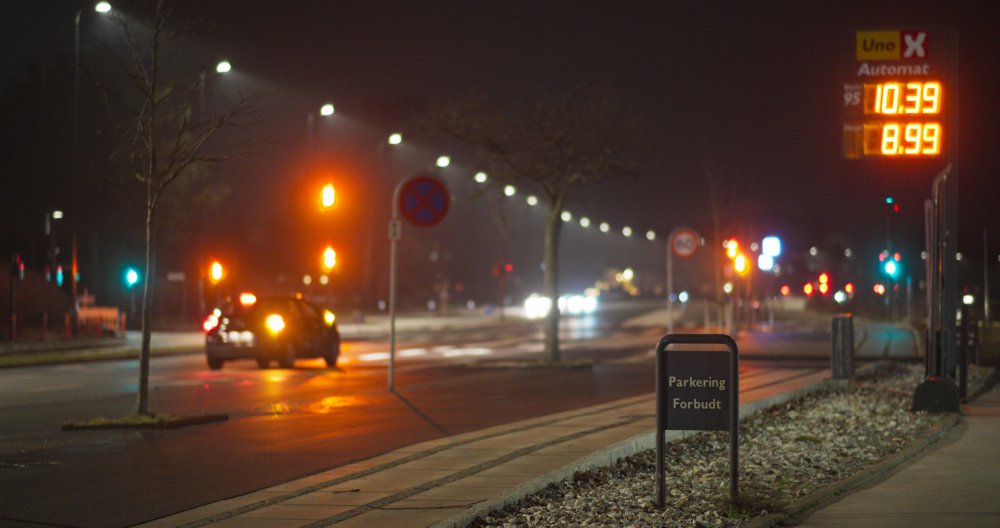
deezid
Members-
Posts
840 -
Joined
-
Last visited
Content Type
Profiles
Forums
Articles
Everything posted by deezid
-
Holy crap, that's probably the most oversharpened video I have ever witnessed my entire life. 😳
-
Honestly I don't see a difference apart from the worse RS performance on my S1H in comparison to a Pocket 6K, at least since FW 2.0 with noise reduction set to -1 which at least up till ISO10000 turns off any temporal noise filtering which badly affects motion. Also I agree about the sharpening, my S1H especially at 6K looks significantly softer than the Pocket 6K using Braw. At 4K the S1H looks as sharp as the P6K though.
-
Actually there is, the internal chroma NR on the Fuji does hurt tonality and hue separation by quite a lot while it's barely an issue on the S Series which still has too much chroma NR internally to be fair - at least there's a workaround by using PRR. Also like I said F-Log and V-Log are very similar. Apart from the different white point and saturation differences the color coordinates and gamma are almost the same.
-
Panasonic cameras don't come with good Rec709 conversions by their own manufacturer. Especially Gen 5 Film Extended is much superior over any Rec709 conversion Panasonic provides. But all the color issues mentioned derive from that very problem and can be fixed with third-party conversions like these: Color between both systems is an almost 100% match.
-
The S5 also has the advantage of way better dynamic range and low light. Colorwise the S5 does much better in terms of tonality but F-Log and V-Log themselves are super similar. Same Bt.2020 primaries and a very similar gamma curve.
-
Not in a synthetic test such as IMATEST which prefers heavily denoised greyscale patches over actual detail and texture, but yes, I do. The A7sIII has some awful internal processing which other cameras usually don't suffer from.
-
Try a still with orange/tungsten lights, they'll turn dark. It also happens with the Sony Venice and shows up in many shows shot on it. The same issue occured on the Panasonic S1 and the first firmware supporting V-Log, but with firmware 1.4 everything gamut and processing-related was fixed. Since it's a Sony it'll probably never be fixed and even Blackmagic does better with their near out of gamut handling since Gen 5. There are worse contenders indeed. Doesn't mean that cheaper cameras such as the Pocket4k, 6k (Pro) and Panasonic S5/S1 seriously outperform the A7sIII and therefor FX3 in terms of video quality. Sony is just more convenient. (screenshots: FX6 S-Gamut3.cine, ACEScct, Rec709 odt)
-
It became faster with firmware 2.0. Check the S5 readings. Still has the best usable dynamic range though only beaten by the RED Komodo in the sub $10,000 class. FX3 and A7s3 are quite weak in that regard.
-
It's more related to keeping file sizes small from what I've heard.
-
Not talking about color, which can be altered anyway or just by using better Rec709 conversions than the ones provided by Panasonic which quite frankly aren't great. The processing is the culprit. Even with noise reduction and sharpening both set to -4 (lowest) and interframe NR OFF the X-T4 showed more sharpening artifacts than my GH5 even with lots of ghosting and smearing on top. Also color separation and tonality on Fuji cameras using F-Log both internally and externally is quite awful. Maybe the HLG workflow @Llaasseerr mentioned helps with both issues but didn't try that myself.
-
Ugh, the X-T3 and 4 have a nasty artificial and plastic looking image with strong temporal filtering on top of the excessive sharpening which gets thrown on the footage even when it's set to -4. Even the A7s3 performs better in that regard. Really no comparison to the S1H with NR set to -1.
-
A 12 bit debayered Log codec like BRaw is actually all you need. Only gripe with Braw I have is its strong processing which e.g. on the EVA-1 produces an image looking worse than its 10 bit internal counterpart. Blackmagic does a great job applying the right linearization and transformations though even for different colorspace outputs.
-
You can do the same using a Log based workflow as well, unless your colorspace is limited which I assume S-Gamut3.cine might be too tiny for anyways. Tried working with ACES but really at least the IDT for Panasonic V35 is quite a mess and leads to heavy blue and tungsten clipping which cannot be fixed within ACEScc/cct. It has to be done before IDT. Will see if I can fix it coming in via linear EXR. Exposing for 42IRE here as well, what this test still shows is that despite doing that, cameras like the S1H have cleaner shadows with more texture and more highlight information as well than others. Noise reduction on some cameras such as the C70 or even Pocket 4K and 6K cannot even be bypassed. I'm sure without its heavy NR the C70 would perform very similarly to other cameras in its price range (around 11.5-12 stops SNR=0.5). CineD currently plans to redo tests using ProRes RAW or Canon RAW on supported cameras. Shooting without any NR is the goal indeed, but this kind of luxury still didn't trickle down to cheaper cameras unless you're shooting ProRes RAW or Canon Raw.
-
The problem shown in these examples shows up in the source footage, which can be downloaded. That's some pretty nasty gamut clipping being even worse than BMD Film Gen 4/5 also using Bt.709 primaries. I can't reproduce anything like that on RED or Panasonic (full V-Gamut) cameras using Bt.2020 basically. I don't think that's the reason though?
-
Unless you're shooting lots of greenscreen or mess up WB/Tint/Exposure all the time, at least on the S1H using its 4K ALL-I and also 6K modes isn't really that important. The external 6K PRR footage pretty much looks almost the same even when pixel peeping. The S1H set to -1 NR isn't doing any destructive temporal noise reduction, only some spatial chroma nr which to be fair may cause some loss of chroma information. Keep in mind, you have to export as ProRes 422HQ at least to have any visual advantage over the S1H's H265 6K even, ProRes 422 already performs significantly worse with noise or lots of moving detail and texture. Still waiting for proper Davinci Resolve support here so I don't have to use Assimilate Player Pro all the time. These ETTR tests are more helpful than any synthetic IMATEST results which can easily be tricked by NR since the ETTR method actually shows what can be buried out of shadows and how much hues shift throughout the exposure range and the A7sIII performs particularly bad in that regard with the FX6 slightly better due to active cooling and way superior internal processing.
-
Actually that makes it even more sound like just an A7sIII in another housing since both may as well use exactly the same firmware now. So you're still handicapped by horrible NR, oversharpening at -7 detail, no shutter angle, no 3D Lut support for output via HDMI, no scopes, no 48p, no true 24p, no DCI 4K etc. But yaaay Cinetone 🙄
-
Just showing how much latitude (over- and underexposure range) is available. The S5 (S1H/S1) perform remarkably well in that regard. Also no NR nor any Gamut issues. ProRes RAW on the S1H (NR-1)/S5 also shows how little NR S Series cameras use which renders PRR basically redundant on these cameras, same with the FX6 and 9 judging from the demo footage I've downloaded. On the A7s3 however PRR is necessary.
-
Another issue with Sony footage (at least lots of FX6 stuff I've seen lately) is that it's quite prone to some nasty gamut clipping in S-Gamut3.cine at least. It looks even worse than BMD footage with HR turned on. Thankfully NR doesn't seem to be a huge problem on the FX6 at last. Is there some S-Gamut3 footage showing bright saturated lights available as well? https://filmplusgear.com/sony-fx6-test-files-for-download/
-
Same with the S5. But keep in mind IMATEST can be tricked with strong noise reduction, which quite frankly the S5 doesn't apply at all. Basically some chroma spatial noise reduction only. Comparisons like these are probably more relevant, starting from ETTR at the top: src: https://www.slashcam.de/artikel/Test/Canon-EOS-C70---Dynamik-wie-bei-Vollformat-Sensoren-.html The S5 has around 1-2 more usable stops of latitude thanks to better NR, downsampling and the IMX410 which seems to have a lower noise floor than the A7sIII/FX6 sensor in general.
-
Welp. Seems like a rehoused A7s3, so very likely the same processing with maybe a lower noise floor due to active cooling.
-
If the FX3 has the same image processing, autofocus and eND as any of the other FX cameras it'll be a no-brainer I think especially given its price tag. If it comes with the Sony Alpha processing (strong sharpening and noise reduction) they can keep it. 😉
-
This here e.g https://filmplusgear.com/sony-fx6-test-files-for-download/ Apart from the gamut clipping (Sony and BMD issue) it looks fine.





